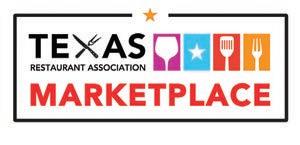from the field
ER: You recently pulled out
of Florida and reduced your presence in other states. Was COVID to blame or were there other problems? RR: It was probably half and
half. We were challenged in Florida because we were too spread out. Denver and Salt Lake were always challenging
RUBIO’S COASTAL GRILL
Emerging from Bankruptcy with Lessons Learned EDITOR’S NOTE: When Ralph Rubio opened his first restaurant in San Diego in 1983, his plan was simple: to offer the kind of fish tacos he’d discovered during a college trip with friends. Rubio’s Coastal Grill (originally Rubio’s Fresh Mexican Grill) eventually grew to 200+ locations; but too-rapid expansion and COVID-19’s impact forced the company into bankruptcy in 2020. el Restaurante Publisher Ed Avis spoke with Rubio (no longer president but still involved in many decisions) about the downside of rapid growth, and how lessons learned will help the company move forward as it emerges from bankruptcy.
tomer base. The food culture
operationally and from a rev-
in Denver is very different than
enue point of view, but we were
in the Southwest. You have
making some ground, especial-
to know that—especially in a
ly in Denver. Then COVID came
business that features a fish
and gave us the impetus to
taco as a signature product.
retreat. We figured, let’s retreat
People in new markets don’t
now and live to fight another
have any clue what a fish
day. As we start to grow again,
taco is, so they think it’s really
we can look to enter one, two
weird.
or three of those markets.
ER: How did the Initial Public
ER: Rubio’s is emerging
Offering (IPO) in 1999 affect
from bankruptcy with about
your growth?
150 locations. How will things
RR: Going public gave us capi-
be different?
tal to really grow the business.
RR: That’s a tough question be-
But the key thing is you have
cause we’re still in the midst of
to consistently grow quarter
it. What about our salsa bars?
after quarter, and that’s hard
Can we bring them back? Is
to do. Post-IPO, we were grow-
there going to be such a thing
ing at a 30 to 50 percent clip in
as a buffet anymore? Or a salad
year-over-year units—that was
bar? There are more questions
way too fast. We were growing
than answers in terms of what
beyond our ability to operate.
the future looks like. On the
EL RESTAURANTE: Tell me
going. But as we got into the
ER: Was it difficult to profit in
positive side, we introduced
about how Rubio’s grew in
late ‘90s and started to use the
new markets?
an Impossible Taco Salad. It’s
the early days.
money we’d raised privately
RR: It was hard because we
done pretty well, so we’re going
RALPH RUBIO: There was a
to grow from 11 restaurants to
didn’t have the brand equity.
to keep Impossible in the res-
point very early on where I
63, I started to realize, “Gosh,
In Denver or Salt Lake City,
taurants. We did a partnership
was very happy with where
this could be a national chain.”
for example, there were a lot
with Top Chef judge Richard
we were and where we were
I came to find out that’s a lot
of homegrown competitors,
Blais on a line of street tacos
easier said than done.
along with chains of scale like
we’re going to roll out this sum-
14 el restaurante | APR/MAY/JUN 2021
ER: What mistakes did the com-
Chipotle and Panera that are
mer. Also, when COVID came
pany make in its growth plans?
ubiquitous, so people knew
we pivoted to digital ordering
RR: Growing continuously
who they were. When someone
because we were geared to do
geographically was a mistake
was looking for a job, they
that. We’re going to continue to
because there’s a socio-demo-
weren’t sure what Rubio’s was.
grow revenue digitally [as we
graphic aspect to your cus-
It was daunting.
move ahead].








